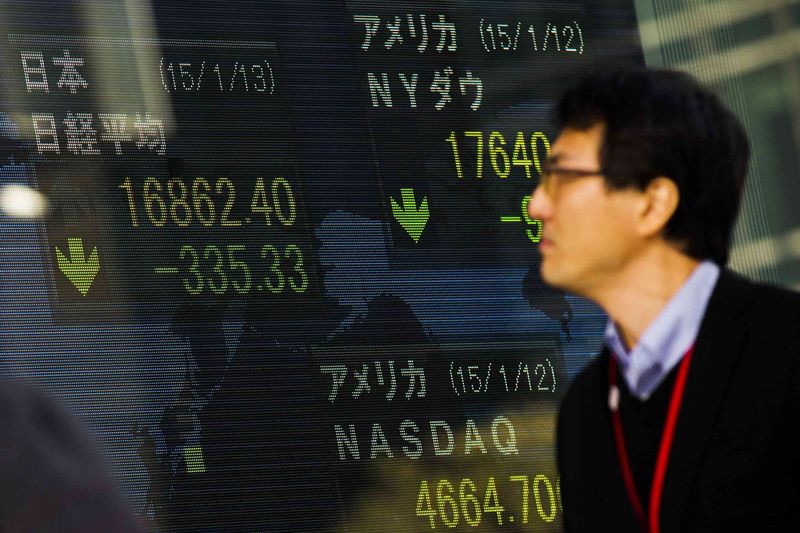By Gina Lee
Investing.com – Asia Pacific stocks were down on Thursday morning. U.S. equity futures were also on a downward trend after the Federal Reserve revealed plans to hike interest rates and pare its balance sheet by more than $1 trillion a year in the minutes from its last meeting.
Japan’s Nikkei 225 slid 1.81% by 10:38 PM ET (2:38 AM GMT) and South Korea’s KOSPI fell 1.3%.
In Australia, the ASX 200was down 0.59%, with the Australian Industry Group (AIG (NYSE:AIG)) services index at 56.2 in March 2022. Trade data for February 2022 also showed that exports grew 0% month-on-month, imports grew 12% month-on-month, and the trade balance was AU$7.457 billion ($5.63 billion).
Hong Kong’s Hang Seng Index inched down 0.1%.
China’s Shanghai Composite was down 0.4% and the Shenzhen Component fell 0.69%.
The S&P 500 and Nasdaq 100 contracts fell on Wednesday, with technology shares leading a retreat that saw the Nasdaq 100 post its worst two-day loss in almost a month.
U.S. Treasuries rose, with the yield curve steepening, as investors continue to digest Wednesday’s minutes from the Fed’s latest meeting. In the minutes, the Fed said it is considering half-point interest rate hikes and reducing its massive bond holdings at a maximum pace of $95 billion per month to tighten financial conditions.
The central bank’s plan to trim its near $9 trillion balance sheet could pose risks to economic growth and introduce further volatility into the market. Some investors are also concerned that a recession is inevitable.
“This job of orchestrating a soft landing is going to be difficult,” Wells Fargo (NYSE:WFC) Investment Institute head of global asset allocation strategy Tracie McMillion told Reuters.
“We’ve only seen quantitative tightening once before and it was to a lesser degree than it will be this time, and it ended shortly after it started.”
A slew of Fed policymakers, including St. Louis Fed President James Bullard, Atlanta Fed President Raphael Bostic, and Chicago Fed President Charles Evans will speak at separate events later in the day.
Contrary to the Fed’s hawkish stance, China again signaled its intention to loosen monetary policy as the country deals with its latest COVID-19 outbreak and a slumping property market. Officials will use monetary policy tools at an “appropriate time” and consider other measures to boost consumption, according to the readout from a State Council meeting chaired by Premier Li Keqiang on Wednesday.
The Reserve Bank of India will also hand down its policy decision on Friday.
Meanwhile, commodity markets continue to be roiled by the impact of Russia’s invasion of Ukraine on Feb. 24. Russia also edged closer to a technical default after foreign banks declined to process around $650 million of dollar payments on its bonds. This forced the country to offer payment in Russian rubles instead.
